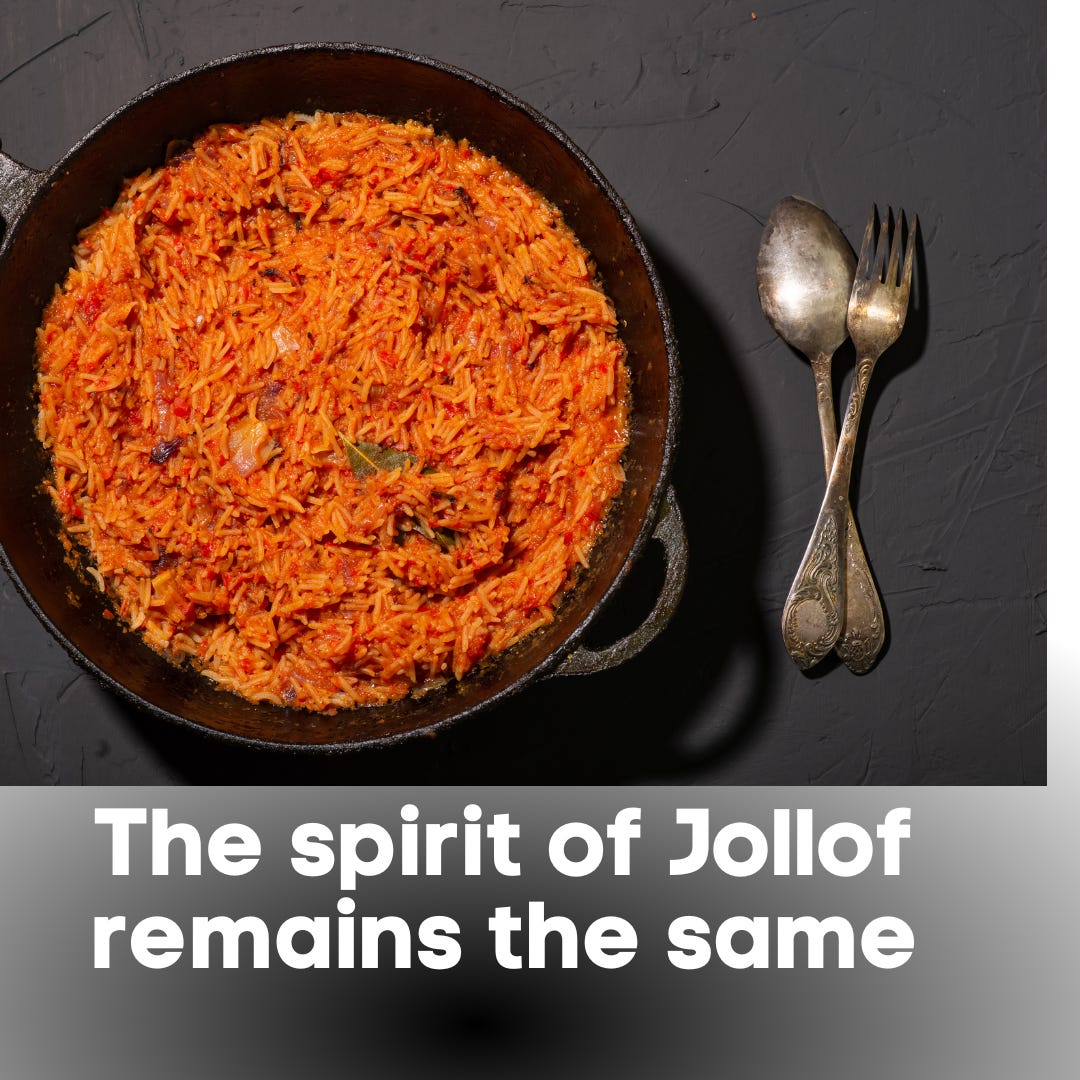How did Jollof Rice spread across West Africa?
Research shows that Jollof rice spread during the entrenchment of colonial rule in West Africa when colonizers replaced existing food crops with broken rice imported from Indochina.
What is Jollof Rice
Jollof Rice is one of the most popular dishes across West Africa. It is a rice-based dish cooked in a spicy tomato-based sauce, with many layers of spices, vegetables, and flavors. One of the interesting things about this dish is that it truly reflects how similar, yet so different, food culture and history are amongst West African countries. The various recipes portray the cultural exchange through trade and migration of various ethnic groups within the continent.
The movement of people across Western Africa was frequent with merchants setting up to connect from the Saharan trade routes to the forested regions of coastal West Africa and across West Africa. The exchange of goods through trade also brought religion, language food, and much more.
Trade led the Dyula, a Mande group from the Mali and Senegambia area, to move west establishing trade posts from present-day Ivory Coast through Niger. The origin of Jollof itself has been credited to the Wolof/Jollof/Djolof peoples of the Senegambia area, from which the dish gets its name. The people in the Senegambia basin had one of the earliest contacts with Europeans in West Africa. Over the centuries, there was an exchange of new goods to West Africa that might have been brought from the “New World”. Ingredients from the new world like tomatoes could have been mixed with already available ingredients to make the earliest Jollof Rice.
Tomatoes, onions, and peppers are not indigenous to West Africa but were most probably introduced through trade and travel. The Dyula are important in the story of Jollof Rice as they might be the starting point for the distribution of Jollof recipes beyond the Wolof tribe.
Rice Is Indigenous to West Africa
Oryza glaberrima, commonly known as African rice, is one of the oldest rice species in the world. It was first domesticated and grown in West Africa around 3,000 years ago, long before Europeans arrived on the continent.
The first Portuguese to journal rice growing in the Upper Guinea Coast was Gomes Eanes de Azurara in 1446. He described a voyage along the coast 60 leagues south of Cape Vert, where a handful of men, navigating down a river that was probably the Gambia. Rice production was not confined to the valley of the Gambia River. It was practiced by many populations living along the West African coast known as the Southern Rivers. The Dyula were also known to be expert rice growers.
Today Jollof is mostly made with the Asian rice species, introduced into the continent by the Portuguese in the 16th century. Thieboudienne (phonetically pronounced chebu jen) is the original jollof rice straight from Senegal. This same rice is also known as Benachin in Gambia.
It is hard to pinpoint who specifically created Jollof in Senegal and how it ended up across West Africa. However, the Senegalese version of Jollof rice, Ceebu jën, is now officially recognized by UNESCO as an intangible heritage of humanity, putting an end to the ongoing debate over its origins and solidifying Senegal's claim as the true home of Jollof rice.




